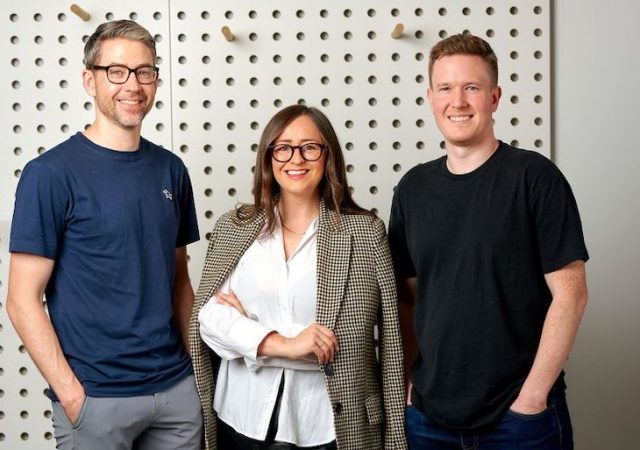It’s very early in your startup’s journey. You and your cofounders have a good mutual understanding of what you think your startup should be, but you can’t agree on what to call it.
You don’t have time for this right now, but you know you need a brand name. Here’s how to just get it done.
I am definitely not a specialist in brand name development but I have a process I’ve refined the hard way — by having too many stakeholders, not enough time and no budget.
Is your brand name good enough?
What does “good enough” mean?
A brand name is good enough if it’s not misleading, if it doesn’t get in the way of acquiring customers, and you and your cofounders are all somewhere on the spectrum between “don’t hate it” and “like it”.
You don’t have to love it yet, and customers may take years to begin to like it, even if you think it’s clever and appropriate.
This is because the value in a brand name is developed over many years through a consistently great total customer experience, not by what you decided to call the company or the new product. Many of the world’s most valuable brands have a good-enough brand name at their core (some even have atrociously bad brand names).
My favourite example of this is Microsoft. “Microsoft” is what’s called a “compound” brand name – made from two components of other words, joined together.
Paul Allen and Bill Gates took the “micro” from “microcomputer” and the “soft” from “software” and called their company “Microsoft”.
But nobody calls them a “microcomputer” anymore, and a more modern take on “micro” and “soft” would be “small and floppy”. I don’t think the famously larger-than-life Steve Ballmer would have been happy working for “Small and Floppy”.
Good-enough brand names which are hugely valuable are all around you, every day.
If you’d never heard of these companies, how would you know what products Ben and Jerry’s, Starbucks, IBM or Ford made or what service they provided?
Tesla was a mad professor who died a pauper. Apple? Don’t get me started.
Yet, all these companies have gradually built a valuable brand by figuring out what their brand attributes were, and then delivering a consistent customer experience that communicated those brand attributes.
Your lesson from this is not to sweat the perfect brand name for your startup: you need to start with a good-enough brand (that isn’t misleading, doesn’t drive customers away, and you don’t actually hate).
Where do we start?
If you build brand value by delivering a consistent customer experience that communicates your brand attributes, it’s a good idea to define your brand attributes first.
Sounds wanky but it’s easy: are you selling a premium product/service or a low-price product/service? (You have to choose one or the other — you can’t credibly be both). Are you high-tech and leading-edge or are you solid, dependable, reliable and proven (again, you can’t credibly be both).
Are you value-for-money or value-for-service? Are you making your customers a lot of money, or saving them time, or making them feel less anxious, or making them feel more in control, or less alone, or sexier, or high?
Are you new or established? Are you gendered or gender-neutral? Are you liberal or conservative? Fighting the establishment or part of it?
You can’t credibly be all these things.
The fewer you try to be, the better you’ll be able to deliver a customer experience which conveys them.
Be ruthless, choose five or less, and none that contradict each other (like leading-edge and dependable).
It takes the whole team
A common mistake is to have a subset of the team doing all the brand work so the rest of the team can work on other things.
While some will tell you they don’t care what the brand name is, there will come a time when they suddenly do care very much: when you’ve come up with something they don’t like.
Trust the process
- You’ll need Post-It notes, pens, and something to stick them to.
- Start by listing the values and attributes of the business. What do you want it to be and stand for? See if you can condense each attribute into a single word, or break multiple word attributes (like “value for money”) into single words (“value” and “money”).
- Take each attribute and use a glossary to build out a ‘word cloud’ of Post-It notes bearing related words, synonyms and homonyms and Latin roots. (“money” could lead us to “asset”, “worth”, “wage”, “salary”, “pay”, “cash”, “currency”, etc).
- It’s unlikely any viable single words in English are available cheaply as domain names under any TLD (top level domain). It’s more likely that a combination of two or more words/prefixes/suffixes will be available. So build a long list of possible compound names by combining two or more options from your word cloud. These are your first-round contenders. Discard any (like “Microsoft”) that make you sound small and flaccid!
- Check each is available as a trademark under the relevant class. There are free trademark search tools for this.
- Check each is not a slang term in English(with urbandictionary) or in a major international language (by checking the first three pages of a Google search on the word, and by using Google Translate).
- Check domains and social accounts are available. Depending on the target customer demographic, you may not need all the social accounts to be available but don’t choose a brand name that already has a social account of the same name, even if that social network isn’t important for your demographic.
- Get to a ranked shortlist of the remaining candidates by asking the whole team to vote for them.
- Unless your number one choice is “Microsoft” you should be good to go register the domain!
We’re a startup, isn’t there a SAAS for this?
Tools come and go (they can be hard to monetise) but right now you could try Naminum (adds prefixes and suffixes to a word you input, then checks for domain name availability on GoDaddy).
Business Name Chooser is an iOS app that checks for trademark and domain name availability.
Bust-a-name helps create names and then checks domain availability. Or you can, of course, use a generative AI like ChatGPT.
Hope I’ve helped you stop prevaricating and start finalising your startup’s brand name. Let me know how the process goes for you and what you choose.
- Alan Jones is Entrepreneur in Residence for Remarkable.org.au, was a founding investor in Pollenizer, Startmate and Blackbird Ventures and is a partner at M8 Ventures. He also prints some cool t-shirts to help refugees and tweets as @bigyahu




















Trending
Daily startup news and insights, delivered to your inbox.